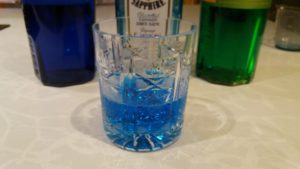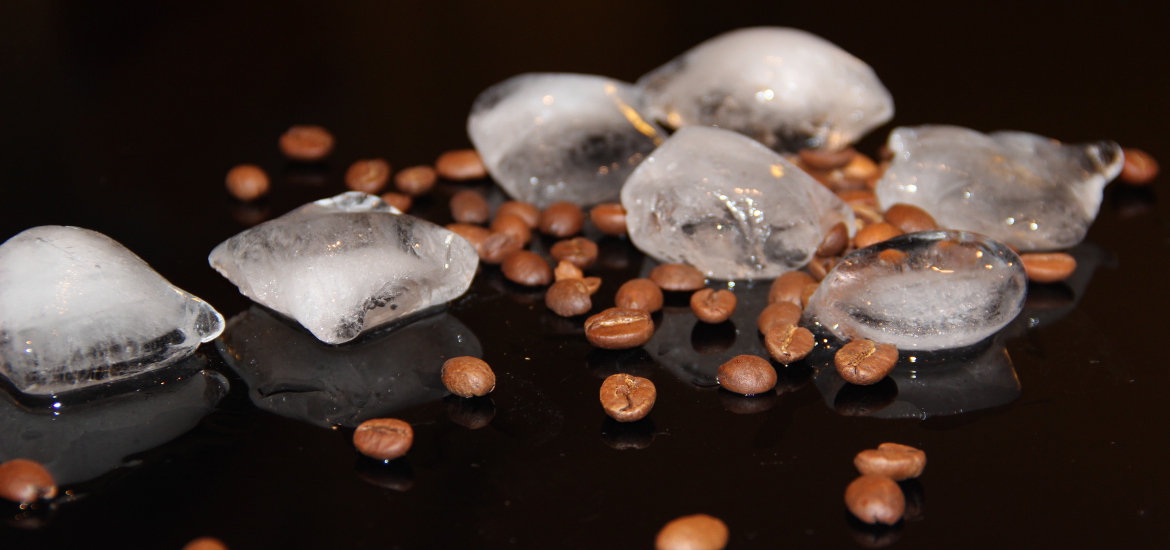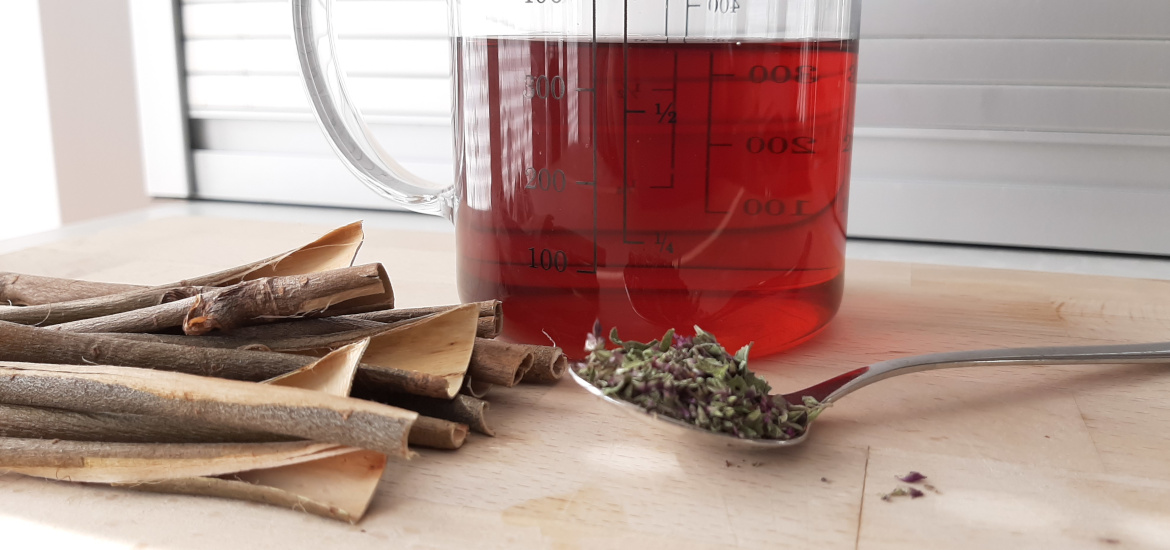When choosing between Star Wars and Star Trek, there is no doubt in my mind. I am a Trekkie through and through. The series left a lasting impression on me and in it has shaped in many ways my world view.

However, everything is not perfect. I deeply disapprove of the replicators – however practical they might be – and am always ready to grab a bite or a drink in Ten forward. Therefore I decided to replicate (without the replicator) the most famous drink in the universe: Romulan ale (i.e. Romulan beer). That blue thing that gets you insanely drunk and leaves you with an enormous hangover. I am naturally aiming for the bluish part and a bit of drunkenness, while hopefully excluding hangover from my creation. And since I know it is illegal in the federation space, I will follow doctor McCoy’s suggestion and only use it for medical purposes.
Well, no wonder that there are many recipes and depictions of this famous drink on the Internet. All of them use Blue Curacao as the base for the blue color and add various alcoholic drinks, including pure alcohol, to get that reputedly insane drunkability. Well, using the motto why to duplicate if you can complicate, I decided to get the blue color by other means than Blue Curacao. It turns out that this is easier said than done since Blue Curacao is virtually the only blue alcoholic drink out there.
I decided to make a bluish drink by mixing other alcoholic drinks of different colors since I did not want to add coloring additives directly. It is true, however, that blue is one of three primary colors which make up all the other colors and in theory cannot be mixed with them. But cruel reality never stopped me from trying, so I tried a bunch of mixtures in order to prove mother nature wrong. I started from the green melon liqueur since the green color is composed of blue and yellow and I hoped to get something bluish by dimming the yellow component.
First attempt was made by adding Campari. This resulted in various shades of brown, with the biggest success being a light brown mixture with a bluish hint. The taste was mediocre, something between a sour melon and a sweetish Campari – definitely not the solution I was looking for.

Next, I tried something yellow – Limoncello. The famous Italian drink made from lemons and widely popular among Tuscany enthusiasts – including me (I always group pleasurable things in one basket – in the case of Tuscany this is spectacular landscapes, Limoncello, Olives, and Chianti – although they are not all exclusively found in Tuscany). So I was hoping Limoncello would show its magic also in my case. Well, the color got somewhat bluish – granted with some imagination – when the ratio was strongly in favor of Limoncello (more than 4 parts of Limoncello per 1 part of melon liqueur). The taste was nice, with strong lemon taste and a hint of a melon, but that just did not suffice due to the lack of bluish color.
In the desperation, I also turned to non-alcoholic juices – apricot, apple, and pineapple being the final choices. The color ranged from brownish-blue to green. The pineapple was closest to bluish color (with a lot of imagination) and apple having no effect on the primary green color of melon liqueur. The ratio in which the drinks were mixed had no significant influence. The color started to lean towards the most prevalent component. The taste also varied from drink to drink with the mixing ratio again having a small impact. The apple could be hardly tasted while pineapple quickly dominated the melon taste. The most tasteful combination was with the apricot juice, where the melon tastes nicely inserted itself into the apricot body creating an even fuller taste. Sadly, the final solution was still not there.

Finally, I gave up and turned back to roots. I decided to use the Blue Curacao. In the meantime, I attended a cocktail mixing workshop and came away full of knowledge and new ideas. My cocktail should be crystal clear since this is apparently highly preferred in the cocktail world. I skipped the non-alcoholic components, which will guarantee more success in getting the great drinkability of the cocktail. The only thing without alcohol will be ice, lots of ice.
For the base of the Romulan ale I selected gin, but not any kind. Bombay sapphire, one of my favorite alcoholic drinks, should be a perfect cocktail base. Beside Blue Curacao, I also used melon liqueur. Not because I had some left over from the previous experiments, but because I wanted to get a hint of a turquoise color. Further, the melon taste definitely improved the drink, which was another welcomed addition. The Blue Curacao liqueur essentially provided the blue color while the melon liqueur nicely complemented the final taste.
MAKING THE ROMULAN ALE
Ingredients and amounts per one glass:
- 50 ml of good gin (personally I recommend Bombay sapphire).
- 10-20 ml of Blue Curacao liqueur (depending on the color intensity that you want).
- 10-20 ml Melon liqueur (depending on the intensity of the melon taste that you want).
- Lots of ice.

The process of making my Romulan ale is fairly simple. Pour gin in a suitable glass, add both liqueurs and stirr. The Blue Curacao liqueur has practically no influence on the taste of the drink. But the amount you add strongly affects the blue color intensity. The reverse is true for the melon liqueur. It has small effect on the color, but the amount you add has strong influence on the taste. More you add, stronger is the melon taste. My favorite ratio is 20 ml of Blue Curacao liqueur and 10 ml of Melon liqueur. That way you get a strong blue color and a mixed gin/melon taste, which is not too powerful.


Then add Blue Curacao liqueur…

And finally add Melon liqueur.
Image credit: Amazing food








